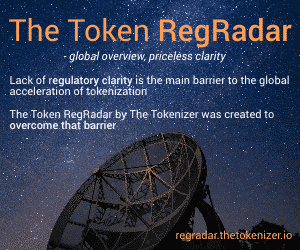American William Entriken is the lead author of the ERC-721 standard and the creator of Su Squares. In part one of the interview series with William, he explained how the ERC-721 standard came about and the difference between the ERC-20 standard and the ERC-721 standard. In this part of the interview, he gives his view on how the ERC-721 standard can be utilized in the art market.
– an interview with William Entriken, the lead author of the ERC-721 standard, PART 2
Jonas: Why do you think that the ERC-721 token standard has been so appreciated by the art market and what do you think it can it be used for in relation to art?
William: Basically, the problem everybody wants to solve is provenance. They want to track who touched these assets. We’re talking about fine art here. We’re talking about art you collect, art you trade, limited edition, not just digital art, not stuff you print. Let me give you an example where a museum wants to sell one of their artworks. Currently, best practices here are that the museum put the artwork in a frame, then they get a piece of chalk and write on the frame some museum number – like ‘Item 17’. This is called a number scheme. The museum puts the number in an Excel file and then the museum sells it.
When the artwork is sold, the new owner they put their number in a different colored chalk underneath the item number. This is best practice. Best practice since they’ve had chalk in art. They’ve been doing this forever. So, if you want to authenticate a piece of art, what you do, is you go find out where it was on display. You go look for their books. You say, “Oh, number 17, oh, 17 is written on here. It looks legit.” I’m not joking. This is how they do that.
Jonas: Does there exist other techniques to track artworks?
William: Carbon dating and x-rays exist, but the main technique is that you have to call each one of these museums, or private holders or whatever, and you cross-reference. It works. It actually is surprisingly effective. So, with this method you’re preventing against a certain type of fraud. You’re preventing from somebody taking a picture of the Mona Lisa off the internet, going home, and paint it themselves, because they won’t know what marking are on the back, because if they go to Louvre and flip it over, they will be arrested.
So, the owner of the work will know the marking on the frame and you won’t. But this is very weak security. It does not prevent them from certain types of attack. A museum, for example, receives a piece of artwork, they copy it and then they sell it to two different people. This is a vulnerability, but it’s not really a big deal, because that doesn’t happen so much. Normally, there’s integrity with museums. But with private holders, that could definitely be happening.
Jonas: So, tracking of artworks is a use case of non-fungible tokens and the ERC-721 standard that you were the lead author of. What other use cases of the ERC-721 standard exists?
This is the base use case of non-fungible tokens and ERC-721: we want to track the authenticity of artworks that’s physically held by different people. Once you’ve done that, there’s other features.
For instance, you can improve the insurance market. How does an insurance company know if something has been stolen? Well, the owner of the stolen object tells the insurance company that the object has been stolen, and they fill out a form. But there’s insurance fraud all the time, and if you have an ERC-721 token that represents the object – in this case an artwork – and you mark the artwork as stolen, the insurance company would say, ‘Oh, well at least everybody knows this is stolen.’ So that’s good. That makes insurance better. It makes the price of insurance go down when these things are registered. Just like a car. If you call the insurance company and say, “Oh, my car’s lost,” they will say, “Okay, where’s the police report?” They’re going to make sure that nobody else can buy that car. So, this is the benefit of registering stuff.
None of these ideas are new. We already register cars. We register houses. We insure them. We trade them. We authenticate them. We appraise them. These are all great things. With ERC-721 tokens the industry wants to take some of those concepts and apply them to artworks, using the same method we already do for cars. Cars are very expensive, and we register every one of them in a car registration office by their VIN number. We don’t do this for artwork, so people see this as an opportunity.
Jonas: So, the use cases for the ERC-721 standard in the art industry are provenance and insurance?
William: Yes. This is kind of very technical and mechanical, but for some reason, people get excited about this stuff. They say, “Okay, we want to have better tracking of artworks.” I didn’t see it as a big pain point. I wasn’t aware that we do not have tracking of artworks and therefore can’t insure them. I didn’t really see that as a problem over the past 1000 years, but it’s a natural use case, so it definitely is going to happen whether people want it or not.
It’s going to make all this a little easier, but we already do that stuff. We just do it on paper, and it’s expensive to verify. In the future, the method will be digital, and this will make it cheaper to verify the works of art. Which is good. It’s not going to affect any of the seven, eight, nine-figure artworks, or the priceless artworks, because these are always going to use paper, but it might affect the three, four, five-figure artworks, that are currently unregistered and were you as of today just got to know the person who makes it to know that it is a legit work of art.
Image by Foundry Co from Pixabay
More Articles:
ConsenSys Announces Partnership with China’s Blockchain Services Network















